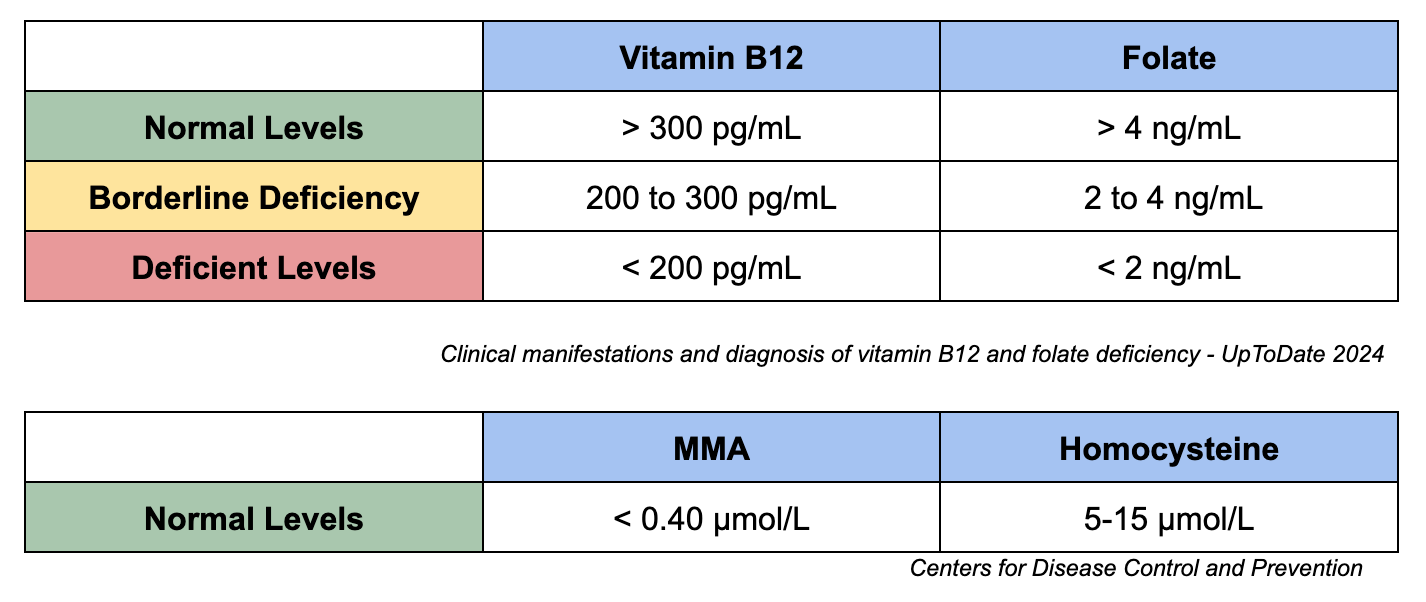Anemia is a blood disorder that has an impact on the red blood cells. Many different types of anemia can exist in patients. In this post, we are going to discuss pernicious anemia.
What is Pernicious Anemia?
Pernicious anemia is a very rare autoimmune disorder that does not allow for proper vitamin B12 absorption which ultimately leads individuals to have an irreversible deficiency in this vitamin.1 It can further cause megaloblastic anemia which is when there is a presence of large red blood cell precursors in the bone marrow.2 In pernicious anemia, the deficient levels of vitamin B12 are due to the body lacking the intrinsic factor that forms a complex with vitamin B12 which allows absorption into the gut.1 This can impact one at any age but is more common in older age individuals being 60 years and older.
What are the symptoms of pernicious anemia?
The progression of disease is slow and symptoms can take a few years to present. The most common symptoms one may present with is overall fatigue, lethargy, and feeling weak.4 Patients may also have some GI upset with nausea, vomiting, or diarrhea.4 Physical assessment of the patient may include dry skin, jaundice, and a red swollen tongue. 4
How is pernicious anemia diagnosed?
Diagnosis can be made by ordering laboratory blood tests. The provider will assess between vitamin B12 and/or folate deficiencies to fully determine what type of anemia is present. If those values are borderline, further testing may be needed to assess methylmalonic acid (MMA) and homocysteine levels.4 Both MMA and homocysteine levels will accumulate in the body during B12 deficiency and just homocysteine is elevated for folate deficiency.4 In the tables noted below, there are reference ranges for determining which deficiency may be present. A treatment regimen can be created once there has been a confirmed diagnosis.
How to treat pernicious anemia?
With this being an autoimmune disorder, patients will require lifelong treatment. For patients with severe symptoms, treatment starts with 1000 mcg injected intramuscularly once daily for 7 days, then the frequency can vary to 1-3 times weekly for 4-8 weeks.1,6 Once stable, maintenance therapy can be decreased to an injection once every month or every other month. Patients who are experiencing less severe symptoms may start on once-weekly injections. Patients will continue to be monitored every six-12 months with blood tests to ensure they are at adequate levels.
How to prevent further deficiency?
Patients with pernicious anemia have an irreversible cause of deficiency, so it’s important to ensure other factors do not contribute to further deficiency progression. Certain lifestyle habits like consuming alcohol can decrease B12 levels.3,5 There are also some commonly prescribed medications that can deplete B12 levels. Some of those include metformin which is used in type 2 diabetes, heartburn medications that alter the production of stomach acid such as PPIs or H2 blockers, and oral contraceptives.5
This article was written by McKayla Narveson, PharmD Candidate in collaboration with Eric Christianson, PharmD, BCPS, BCGP
- 30 medication mistakes PDF
- 18+ Page Drug Interaction PDF
- 10 Commandments of Polypharmacy Webinar based on my experiences in clinical practice
- Vaqar S, Shackelford KB. Pernicious Anemia. [Updated 2023 May 8]. In: StatPearls [Internet]. Treasure Island (FL): StatPearls Publishing; 2024 Jan-. Available from: https://www.ncbi.nlm.nih.gov/books/NBK540989/
- Hariz A, Bhattacharya PT. Megaloblastic Anemia. [Updated 2023 Apr 3]. In: StatPearls [Internet]. Treasure Island (FL): StatPearls Publishing; 2024 Jan-. Available from: https://www.ncbi.nlm.nih.gov/books/NBK537254/
- U.S. Department of Health and Human Services. (2022, March 24). Vitamin B12–deficiency anemia. National Heart Lung and Blood Institute. https://www.nhlbi.nih.gov/health/anemia/vitamin-b12-deficiency-anemia
- Means RT. Clinical manifestations and diagnosis of vitamin B12 and folate deficiency. UpToDate, Waltham, MA: UpToDate Inc. https://www.uptodate.com (Accessed on October 31, 2024)
- Means RT. Causes and pathophysiology of vitamin B12 and folate deficiencies. Waltham, MA: UpToDate Inc. https://www.uptodate.com (Accessed on October 31, 2024)
- Cyanocobalamin. Facts & Comparisons: Drug Facts and Comparisons, Monograph, Wolters Kluwer Clinical Drug Information, Inc. https://fco.factsandcomparisons.com/lco/action/home. Accessed October 31, 2024
- Methylmalonic acid (MMA). Centers for Disease Control and Prevention. https://wwwn.cdc.gov/nchs/data/nhanes/2013-2014/labmethods/MMA_H_MET.pdf. Accessed November 4, 2024



0 Comments